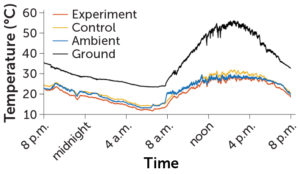
In an era where financial management is increasingly intertwined with technological advancements, understanding health insurance plans is crucial for couples. As we move into 2025, the landscape of health coverage is evolving, with new options tailored to meet the unique needs of couples. Whether you’re newlyweds or have been together for decades, navigating the plethora of health insurance plans available can be overwhelming yet essential for financial stability and well-being.
With healthcare costs rising and the intricacies of health insurance policies becoming more complex, couples must stay informed about the best health insurance options available. Health insurance not only provides financial protection against unforeseen medical expenses but also plays a vital role in overall financial planning. This guide aims to equip couples with the knowledge to make informed decisions about their health insurance needs in 2025.
In this article, we will explore the different types of health insurance plans available for couples, compare their benefits, and provide actionable insights to help you choose the best plan. From understanding the nuances of coverage options to leveraging technology for financial management, this comprehensive guide will serve as your roadmap to securing the right health insurance for you and your partner.
Understanding Different Types of Health Insurance Plans
Health insurance plans for couples in 2025 come in various forms, each with unique features and benefits. The key is to understand these types to make an informed decision. The most common health insurance plans include Health Maintenance Organizations (HMOs), Preferred Provider Organizations (PPOs), and High-Deductible Health Plans (HDHPs).
Health Maintenance Organizations (HMOs)
HMOs offer a network of doctors and hospitals, providing a straightforward way for couples to manage their health care. Typically, HMOs require members to select a primary care physician and obtain referrals for specialist care. While this might seem restrictive, HMOs often boast lower premiums and out-of-pocket costs, making them an affordable couple health insurance option.
Preferred Provider Organizations (PPOs)
PPOs offer more flexibility in choosing healthcare providers and do not require referrals for specialists. This flexibility is particularly appealing for couples with specific healthcare needs. However, PPOs usually come with higher premiums and out-of-pocket costs. For couples who value choice and are willing to pay a little extra, PPOs can be an attractive option.
High-Deductible Health Plans (HDHPs)
HDHPs are paired with Health Savings Accounts (HSAs), allowing couples to save money tax-free for medical expenses. These plans have lower premiums but higher deductibles, making them suitable for younger, healthier couples who can afford to pay more out-of-pocket in exchange for lower monthly costs. HDHPs can be a strategic choice for couples focusing on couples financial management strategies with technology, enabling better control over healthcare spending.
Comparing Health Insurance Plans for Couples
When comparing health insurance plans, couples should consider several factors, including cost, coverage, and network size. In 2025, technology plays a pivotal role in simplifying this process, with many online tools available to assist in comparing plans side by side.
Cost is a critical factor, encompassing premiums, deductibles, co-pays, and out-of-pocket maximums. For example, a couple might find that an HMO offers the lowest premiums but requires higher co-pays for services, while a PPO might provide broader coverage with higher monthly premiums. Understanding these costs is essential for effective financial planning.
Coverage is another vital aspect. Couples should assess whether a plan covers essential services like maternity care, prescriptions, and specialist visits. For instance, a couple planning to start a family might prioritize plans with comprehensive maternity coverage. Conversely, those focused on preventive care might look for plans with robust wellness programs.
Finally, consider the network size. A large network means more choices for healthcare providers, which is crucial if you have preferred doctors or specialists. However, larger networks often come with higher costs, so couples must balance choice with affordability.
Leveraging Technology for Better Health Insurance Management
As digital technology continues to advance, couples can utilize various tools to manage their health insurance more effectively. From online portals to mobile apps, technology offers innovative solutions for monitoring healthcare expenses and optimizing health coverage for couples in 2025.
One such technological advancement is the availability of telehealth services. Telehealth allows couples to consult healthcare providers remotely, saving time and reducing costs. Many health insurance plans now include telehealth as a covered service, making it easier for couples to access care without leaving home.
Moreover, personal finance apps are becoming integral to managing healthcare expenses. These apps can track medical bills, compare costs between providers, and even suggest ways to save money on prescriptions. By integrating these tools into their daily lives, couples can enhance their financial management strategies, ensuring they maximize the benefits of their health insurance plans.
Additionally, wearable health technology like fitness trackers can provide data that helps couples make informed decisions about their health insurance needs. These devices can monitor vital signs and alert users to potential health issues, potentially leading to early intervention and reduced healthcare costs.
Future Trends in Health Insurance for Couples
Looking forward to 2025, several trends are expected to shape the health insurance landscape for couples. Understanding these trends can help couples make proactive decisions about their health coverage.
One significant trend is the increasing emphasis on personalized healthcare plans. Insurers are beginning to offer customizable plans that cater to the specific needs of couples, from personalized wellness programs to targeted risk assessments. This trend reflects a broader move towards consumer-centric insurance solutions.
Another trend is the rise of value-based care. This model focuses on providing high-quality care while containing costs, rewarding providers for outcomes rather than services rendered. For couples, this means better care coordination and potentially lower costs over time.
Finally, legislative changes may impact health insurance options. As governments continue to debate healthcare policies, new regulations could alter the availability and structure of health insurance plans. Staying informed about these changes is crucial for couples to adapt their health coverage strategies accordingly.
To complement this guide, consider watching video content that explores real-life scenarios of couples navigating health insurance choices. These videos offer practical insights and tips for making informed decisions.
Frequently Asked Questions
What is the best health insurance plan for couples in 2025?
The best health insurance plan for couples in 2025 depends on individual needs, preferences, and financial situations. HMOs offer low-cost options, while PPOs provide flexibility. HDHPs with HSAs are ideal for those comfortable with higher out-of-pocket expenses. Evaluate your healthcare needs and budget to determine the most suitable plan.
How can couples save on health insurance costs?
Couples can save on health insurance costs by choosing plans with higher deductibles and lower premiums if they’re healthy and rarely visit the doctor. Utilizing telehealth services and wellness programs can also reduce expenses. Additionally, comparing plans and negotiating rates with providers can lead to significant savings.
Are there health insurance plans that cover maternity care for couples?
Yes, many health insurance plans offer maternity coverage, including prenatal, delivery, and postnatal care. Couples planning a family should prioritize plans with comprehensive maternity benefits. Some insurers offer specific programs for expecting parents, providing additional support and resources during pregnancy.
How does technology aid in managing health insurance for couples?
Technology aids in managing health insurance by offering tools for cost tracking, provider comparisons, and accessing telehealth services. Personal finance apps can help monitor medical expenses, while wearable devices provide health data to optimize insurance plans. These technologies streamline the management of healthcare and insurance needs.
What are the upcoming trends in health insurance for couples?
Upcoming trends in health insurance for couples include personalized healthcare plans, value-based care models, and legislative changes. Insurers are offering customizable plans, focusing on quality outcomes and cost containment. Staying informed about these trends helps couples adapt their strategies to secure the best coverage.
Conclusion
Choosing the right health insurance plan is a vital decision for couples, impacting both financial stability and access to healthcare. By understanding the different types of plans, comparing costs and coverage, and leveraging technology, couples can make informed choices that align with their needs and budget.
As you navigate the health insurance landscape in 2025, consider future trends and legislative changes that may influence your options. Stay proactive by regularly reviewing your plan and adjusting your coverage as your needs evolve.
For couples looking to optimize their health insurance, take advantage of online resources and tools to compare plans and manage costs effectively. Your health and financial well-being depend on making the right decisions today.
Further Reading
Explore these topics to deepen your understanding of health insurance and financial management:
- The Impact of Telehealth on Healthcare Costs
- How to Use Technology for Better Financial Management
- Understanding Value-Based Health Care Models










